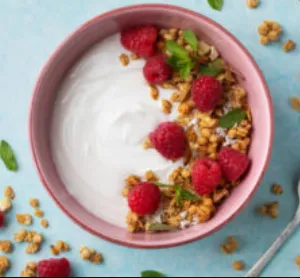As a response to the shifting consumer preference for no-sugar and low-sugar products, food and beverage manufacturers are making sure that artificial and natural sweetener products play a growing role in satisfying the world’s sweet tooth.
Read on for an overview of how these ingredients influence the broader human nutrition market and the growing role non-caloric sweeteners bring to the industry. Consumer tastes may change, but sweet always sells.
The (Growing) Need for Sweetener Alternatives to Sugar
Make no mistake; sugar, in its many naturally sourced forms, remains one of the most commonly used ingredients in the food and beverage industry. Natural sweeteners, including cane sugar, maple syrup, corn syrup, agave nectar, fruit sugars, molasses, and others, are integral to US and international food manufacturing.
While terms like “natural” and “artificial” have strong connotations (and elicit emotional consumer reactions), the distinction can be less defined than it may appear.
High-Intensity Sweeteners vs. Natural Sugar: What’s the Difference?
Natural sugars are made from plants, but most, like high-fructose corn syrup, are heavily processed. Broadly, ingredients within the natural sugar category are often referred to as “caloric sweeteners,” a term that includes sweeteners across the sourcing spectrum.
Natural sweeteners have high caloric density, minimal health benefits, and well-documented negative impacts on human health. Overconsumption has been linked to diabetes, obesity, and various other lifestyle diseases. Caloric sweetener usage generally declined from the late 1990s through 2019. From 2020 to 2021, the USDA noted a 1% annualized increase in caloric sweeteners, the first increase since 2016.
At the same time, high-intensity sweeteners have played a larger role in sugar reduction projects. High-intensity sweeteners include comprehensive offerings of artificial, natural, and organic additives with increasing popular appeal. By manipulating sweetener formulas, manufacturers can create sweeteners that are hundreds of times sweeter than natural sugars. This means comparatively minuscule amounts are required to replace sugar. These “high-intensity” sweeteners are non-nutritive, supplying no vitamins or minerals, and are typically calorie-free.
Are Artificial Sweeteners Healthier than Sugar?
Most medical experts agree that consumers should monitor and restrict their sugar intake, be it from natural or artificial sources. That said, the wide array of high-intensity sweeteners boast several health advantages compared to natural sugars, including:
- Dental impact – Artificial sweeteners do not cause tooth decay or cavities.
- Blood sugar – Artificial sugar substitutes in food and beverages don’t raise sugar levels in the bloodstream.
- Reduce caloric intake – No-calorie sweeteners may help obese and overweight individuals manage their weight, at least in the short term.
Four Emerging Sweetener Trends
While caloric sugars enjoyed a short-term resurgence, established and new high-intensity sweeteners will play an increasingly important role in meeting future consumer demand and regulatory priorities for a few reasons.
1. Health awareness
High sugar consumption is closely linked to obesity, diabetes, and a slew of cardiovascular diseases. As more healthcare professionals, insurance providers, and public health agencies draw attention to sugar-caused lifestyle diseases, consumers continue to seek low- and no-sugar alternatives to their favorite products.
2. Government regulation
National and state governments and international organizations like the World Health Organization (WHO) have sugar squarely in their collective crosshairs, promoting or enacting sugar taxes, soda bans, and public health campaigns to reduce overall sugar intake.
Over the past decade, the impact of these policies and initiatives has been studied, and the findings consistently support their efficacy. One study found that sugar taxes increased retail prices of soda and sugary beverages by 33.1% over a two-year trial period. During that period, sales declined by 33%, perfectly mirroring the price hikes.
3. Technical innovation
The food and beverage industry has produced an astounding array of artificial and natural non-nutritive sweetener formulas to replace natural sweeteners in new and existing products. Today, alternatives to sugar represent an ingredient category of their own.
4. Tariff and climate volatility
In the longer term, climate change and import policy may also push natural sugar prices higher or cause increased price volatility. For an industry already operating on relatively tight margins, pricing instability poses a substantial barrier to growth and resilience.
Smart Solutions, Sweet Results – That’s Tilley Distribution
Most food and beverage manufacturers rely on a carefully managed mix of natural and artificial sweeteners to deliver delicious products to consumers. That ingredient mix may look dramatically different in the years to come, which is why Tilley Distribution offers more than just ingredients.
We craft customized solutions to position clients to succeed today, tomorrow, and long term. Let’s get started; contact a Tilley representative today to learn more.
